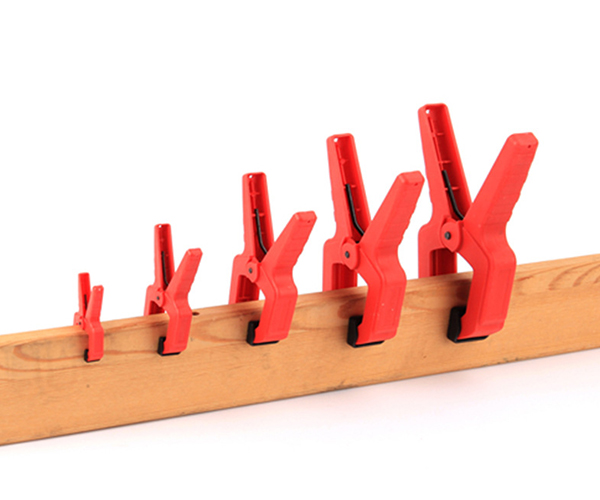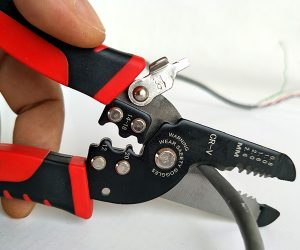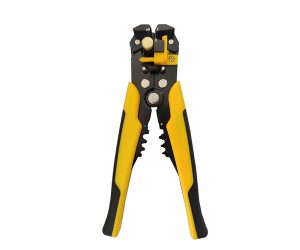Spring clamps are a simple yet versatile tool used across many industries, from DIY projects to professional applications. They may seem like a basic tool, but spring clamps are highly effective in solving a wide range of everyday problems. Whether you’re holding materials together during gluing, securing parts in car repairs, or simply organizing your workspace, these clamps make tasks easier and more efficient. In this article, we’ll dive deep into what makes spring clamps so useful, how they work, and why you should consider incorporating them into your toolkit.
1. What Are Spring Clamps and How Do They Work?
Spring clamps, also known as spring-loaded clamps, are a type of clamping tool that uses a spring mechanism to apply pressure to two jaws, holding them tightly together. This pressure makes them ideal for use in a variety of situations where materials or objects need to be held firmly in place temporarily.
Spring clamps come in various sizes, from small, lightweight versions for delicate materials to large, heavy-duty clamps capable of holding bigger, heavier objects. The mechanism is simple: squeeze the handles of the clamp to open the jaws, then release the handles to allow the spring to close the jaws around the object being clamped.
But here’s the kicker: their simplicity is precisely what makes them so effective. With no complicated mechanisms or adjustments, you can rely on them to provide a firm, immediate hold every time.
Spring clamps are used in a range of applications, from woodworking and car repair to holding materials during painting and gluing. They’re also commonly used in DIY projects because of their ease of use and accessibility. These clamps can hold wood, plastic, fabric, and even metal parts with the right size and strength.
Table 1: Different Types of Spring Clamps
| Clamp Type | Size Range | Material Type | Common Use Case |
|---|---|---|---|
| Small Spring Clamp | 2-4 inches | Plastic, Metal | Light woodworking, small repairs |
| Medium Spring Clamp | 5-7 inches | Metal, Steel | General DIY, automotive work |
| Large Spring Clamp | 8+ inches | Steel, Heavy-duty plastic | Woodworking, construction |
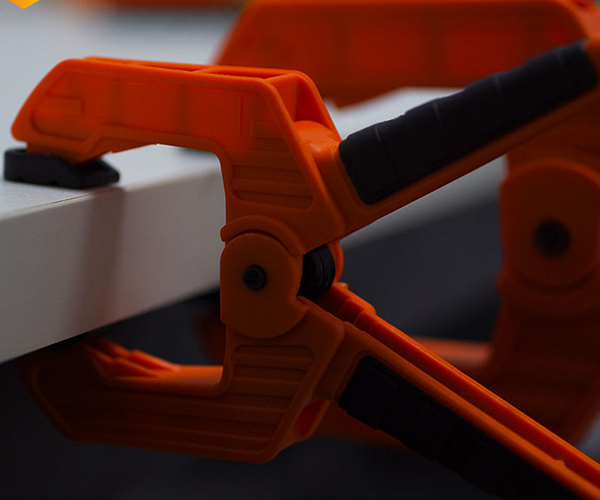
2. Why Are Spring Clamps So Useful?
What makes spring clamps so effective in so many scenarios? It’s their versatility. These clamps are incredibly useful because they allow you to securely hold materials without the need for excessive force or tools. This makes them ideal for a wide range of applications, from DIY enthusiasts working on home projects to professionals needing reliable clamps in their shops.
Ready for the good part? Spring clamps are quick and easy to use. Unlike traditional clamps, which can require screws or additional equipment to tighten and loosen, spring clamps are intuitive. Simply open the clamp, position it, and release to apply pressure. This ease of use is what makes them indispensable in so many situations.
In woodworking, for example, a spring clamp can hold pieces of wood in place while you apply glue, ensuring they stay aligned while the adhesive sets. In car repair, spring clamps can hold parts while you work on them, allowing you to keep both hands free for tools. This speed and functionality make spring clamps a must-have tool in many environments.
Table 2: Common Uses of Spring Clamps
| Application | Use Case | Example |
|---|---|---|
| Woodworking | Holding pieces during gluing | Securing two pieces of wood while glue dries |
| Automotive | Temporary part holding | Securing brake components while working |
| Painting & Gluing | Holding materials together | Clamping fabrics or paper during painting |
3. How to Choose the Right Spring Clamp for Your Needs?
When it comes to choosing the right spring clamp, there are several factors to consider to ensure you select one that fits your needs. But here’s the real story: choosing the wrong clamp can lead to frustration, poor results, or even damage to the materials you’re working with.
First, think about the material you’re working with. Are you handling delicate fabrics, or do you need a strong hold on wooden pieces? The material of the clamp will affect its durability and performance. For lighter materials, a plastic clamp may suffice, but for heavier jobs, a metal or steel spring clamp will be more appropriate.
Size matters too. Spring clamps come in various sizes, and selecting one that’s too small or too large for your needs can compromise the clamping force. Ideally, you want a clamp that fits snugly around the material without causing any damage. When in doubt, choose a medium-sized spring clamp, which can often handle a variety of tasks.
Lastly, consider the load-bearing capacity. Some spring clamps are designed for light-duty tasks, while others can handle more intense applications. Always check the weight limit before using the clamp on a heavy object.
Table 3: Factors to Consider When Choosing a Spring Clamp
| Factor | Light Duty | Medium Duty | Heavy Duty |
|---|---|---|---|
| Material | Plastic | Steel | Steel, Aluminum |
| Max Load Capacity | Up to 5 lbs | 5-20 lbs | 20+ lbs |
| Common Applications | Small repairs, arts | DIY, general home improvement | Construction, automotive work |
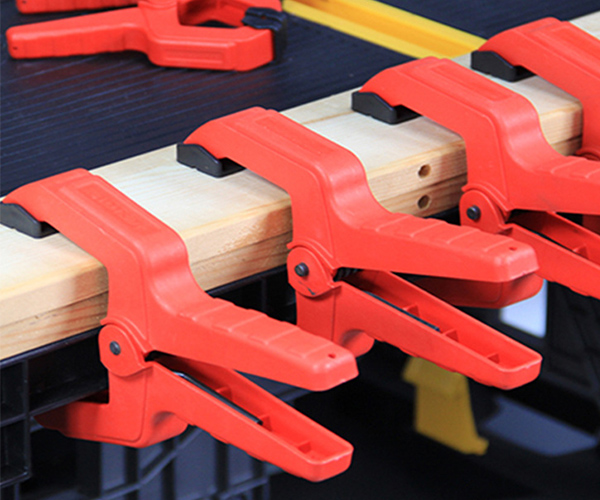
4. Where Are Spring Clamps Used in DIY Projects?
When you think of DIY projects, spring clamps might not always be the first tool that comes to mind. But here’s why they should be: spring clamps are incredibly versatile and can be used in a variety of DIY applications. From simple repairs to complex crafting, these clamps have earned their place in any DIY toolkit.
For example, when working on wood projects, such as building a bookshelf, you can use spring clamps to hold pieces of wood together while you secure them with screws or glue. Similarly, in car repairs, a spring clamp can help you hold small parts in place as you work on fixing larger components.
Spring clamps are also fantastic for holding fabric in place during crafting projects, such as quilting or sewing. They allow you to adjust and hold the fabric as needed, ensuring accuracy without pinning it down permanently.
Table 4: Spring Clamps in DIY Projects
| Project Type | Use Case | Clamp Size Recommendation |
|---|---|---|
| Woodworking | Holding wood pieces while cutting | Medium to large spring clamp |
| Car Repair | Holding parts in place during work | Large spring clamp |
| Crafting & Sewing | Securing fabric or materials | Small to medium spring clamp |
5. What Are the Benefits of Using Spring Clamps in the Workshop?
Spring clamps offer several advantages when used in a workshop setting. But here’s the interesting part: they can actually save you time and effort while improving the precision of your work. Their spring mechanism allows for quick and easy adjustments, so you don’t have to worry about wasting time tightening or loosening screws or bolts.
They also help you keep both hands free while working on projects, which is essential in situations that require precise movements. Whether you’re working with small parts in a tight space or need to hold something in place for a long period, spring clamps provide a stable, reliable grip.
Additionally, they’re easy to store and don’t take up much space. A few spring clamps can serve multiple purposes, and since they’re lightweight, you can store them anywhere without worrying about them taking up too much room.
Table 5: Key Benefits of Spring Clamps in Workshops
| Benefit | Explanation | Example |
|---|---|---|
| Time-saving | Fast and easy to use | Quick adjustments in car repair |
| Precision | Holds materials securely for precise work | Perfect for detailed woodworking |
| Storage-friendly | Compact and lightweight | Can be stored in a small drawer |
Conclusion
In conclusion, spring clamps are an incredibly useful tool for a variety of tasks, ranging from DIY projects to professional workshops. Whether you’re securing materials during woodworking, holding parts in car repairs, or working on delicate projects, spring clamps offer a reliable and efficient solution. Their simplicity, versatility, and ease of use make them a must-have tool in any toolkit. Don’t overlook the power of this simple tool—integrating spring clamps into your projects can save you time, enhance your work quality, and make your tasks more manageable.
FAQ
Q1: What is a spring clamp?
A spring clamp is a simple tool that uses a spring mechanism to apply pressure, holding materials securely in place during various tasks like woodworking, repairs, and crafting.
Q2: How does a spring clamp work?
A spring clamp operates by squeezing the handles to open the jaws. Once the clamp is positioned around an object, releasing the handles allows the spring to close the jaws and hold the object in place.
Q3: What are spring clamps used for?
Spring clamps are used for holding materials together during tasks like gluing, painting, woodworking, car repairs, and even in crafting.
Q4: Can spring clamps be used for heavy-duty tasks?
Yes, there are heavy-duty spring clamps designed to handle larger, heavier objects. However, it’s important to choose the correct size and strength for the task at hand.
Q5: How do I maintain a spring clamp?
To maintain a spring clamp, keep it clean, ensure the spring mechanism is working smoothly, and store it properly to prevent damage. Regularly check for wear and replace any damaged parts.

